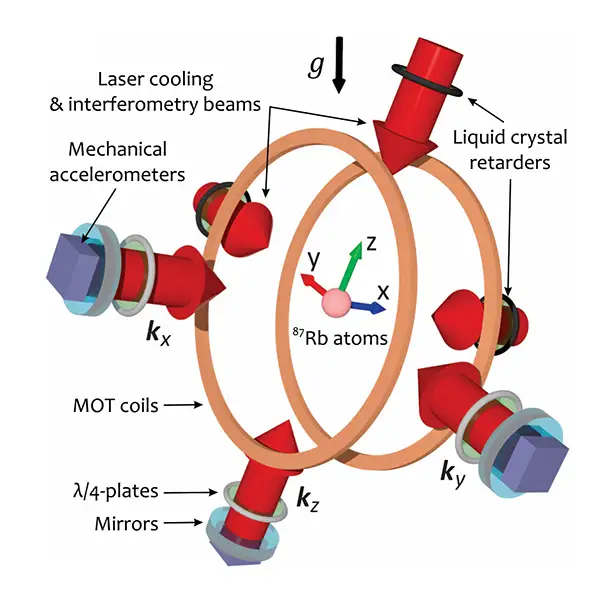Quantum-Based Inertial Sensors
Quantum-based inertial sensors are still in the research and development phase, but their promising properties could lead to significant advances in precision measurement and navigation. They use the principles of quantum mechanics to make high-precision measurements of acceleration, velocity, and rotation along three mutually perpendicular axes. Quantum mechanical phenomena such as atomic interferometry and quantum coherence are used to increase the sensitivity and accuracy of the measurements.
In a typical quantum-based inertial sensor, atomic beams (atoms or molecules) are brought into so-called "superpositions" of quantum mechanical states with the help of laser beams. These superpositions make it possible for atoms to exist simultaneously in different states. When the atoms come back together, characteristic interference patterns are generated.
By applying acceleration, velocity changes, or rotations to the atomic beam as it moves, the interference pattern can be affected. Measuring and analyzing these interference patterns in this way allows precise determination of the changes in acceleration, velocity, or rotation.
Advantages:
- exceptional accuracy and precision in measuring acceleration and rotation for many applications
Lower tendency to drift compared to classical inertial sensors, resulting in more stable and reliable measurements
Disadvantages:
- complexity in manufacturing
- often low temperatures near absolute zero are required to maintain quantum mechanical states.
- the use is usually associated with high cost
Applications:
Aeronautics, space, robotics, geodesy, and earthquake monitoring.

Design concept and geometry of the hybrid quantum inertial sensor (Quantum Accelerometer Triad – QuAT): the different components of acceleration are measured perpendicularly to the surface of the respective mirrors. Image via via Wikimedia Commons, Quantum Accelerometer Triad – QuAT © iXAtom / Exail / LP2NS. Templier and al, Science Advances (2022) / DOI: 10.1126/sciadv.add3854


